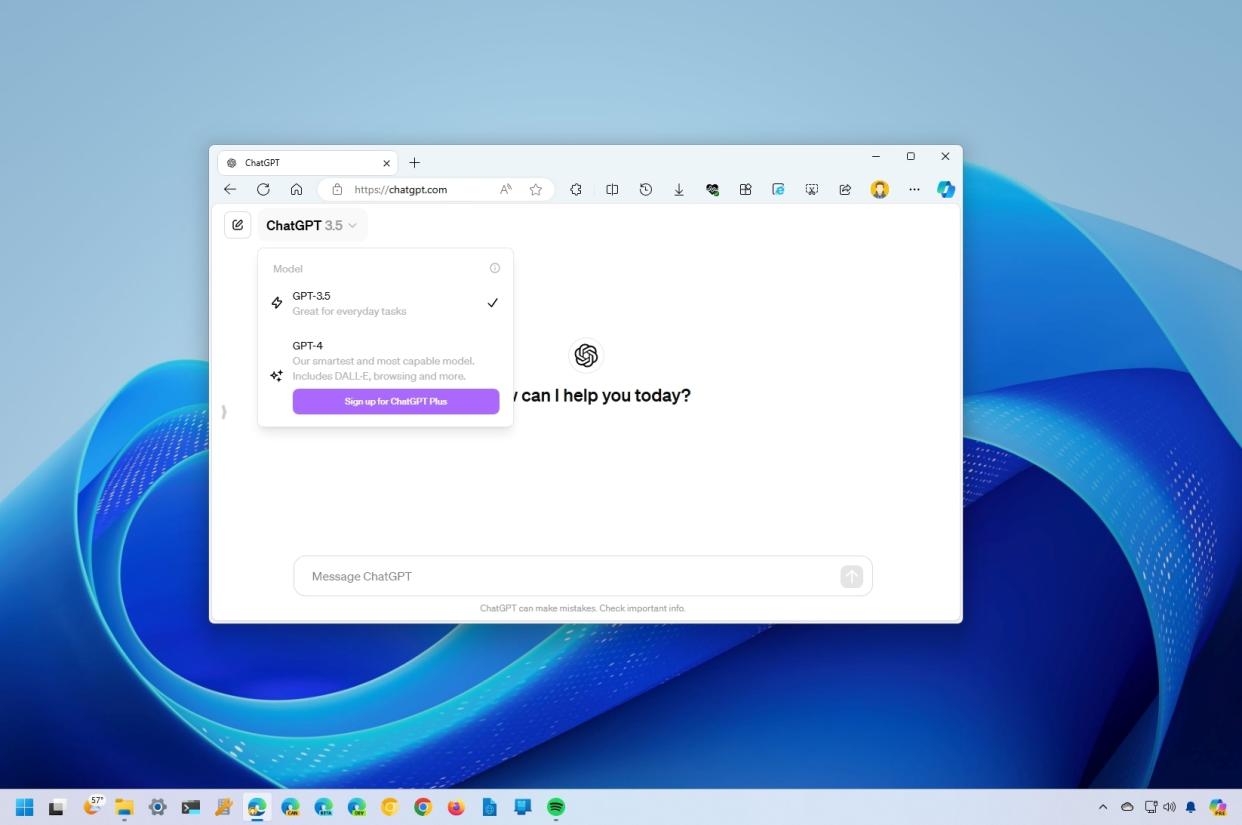What's the difference between GPT-3.5, 4, 4 Turbo, 4o? OpenAI LLMs explained.

OpenAI recently launched its newest large language model, GPT-4o, but with so many versions now available, it's getting confusing to distinguish between them as they all understand and generate text responses. However, the differences lie in the accuracy, speed, cost, and specific features each model offers.
In the case of GPT-4o, we also have to consider the ability to process video to generate responses almost as quickly as a human can process similar information.
In this guide, I'll give you an overview of the differences between OpenAI's large language models so you can have a basic understanding of the available versions.
GPT-4o vs. 4 vs. 4 Turbo vs. 3.5
Currently, OpenAI offers four GPT versions for developers as well as for consumers using ChatGPT, including GPT-3.5, 4, 4 Turbo, and 4o, and here's an overview of all of them to understand their differences.
GPT-3.5
GPT-3.5 became available in March 2022. It's a language model built on the GPT-3 architecture featuring enhancements in scale and training data, and it's currently the version available completely free (without internet search capabilities) through the OpenAI ChatGPT service.
This language mode includes improvements in natural language understanding and generation. Compared to GPT -3, version 3.5 offers better coherence, relevance, and contextual understanding and can more accurately handle more complex instructions than its predecessor.
In addition, there's the less talked about GPT-3.5 Turbo, which introduced various improvements over the original release. This version of the language model was released in preparation for the GPT-4 release, and it allowed developers to customize the model for different use cases and run these models at scale.
GPT-4
GPT-4 was launched in March 2023. This version has the ability to process both text and images, opening up a world of possibilities for understanding and generating content involving visuals.
Compared to GPT-3.5, it can better understand the context, perform complex reasoning tasks, provide more accurate responses, and generate more human-like text.
Furthermore, it provides more options for fine-tuning and customizing the model for specific use cases.
One of the limitations of the model is that it consumes more computing resources, which translates into higher costs for the company to maintain.
It's worth pointing out that the ability to process images refers to using images as input, since OpenAI also includes the DALL-E model to create AI images from text prompts.
GPT-4 Turbo
GPT-4 Turbo became available in November 2023. This release was a revision of the original GPT-4 that provides similar performance, but it's not as computationally intensive as the original release, meaning it lowers the operational cost.
Some of the improvements include faster response times, making it suitable for applications requiring quick interactions, and using fewer resources, making it more accessible for various applications.
Although this version is similar to GPT-4 and provides a balance in performance and cost, some trade-offs could make this model less accurate in certain tasks.
At the time of this writing, you can only access GPT-4 and Turbo with the paid subscription.
GPT-4o
GPT-4o is the latest version of the language model from OpenAI, which became available in May 2024. It's important to note that this is GPT-4" o," not GPT-4 "0" or "4.0." It's an "o" for "omni."
This version of the model is still based on the GPT-4 architecture, but it's capable of processing text, audio, image, and even video to generate outputs on any type of input, including text, audio, image, and video.
OpenAI refers to this version as the most human-like experience, since it can process audio almost as fast as the human response time during a conversation. The performance of "4o" is identical to "Turbo" for text and code reasoning, which translates quicker and at a cheaper cost in the API.
Compared to any existing OpenAI model, GPT-4o excels in understanding video and audio. This model can even remember objects and events.
OpenAI is making GPT-4o the default language model for ChatGPT, but it has limitations in the number of prompts you can input per day. Once you reach the limit, ChatGPT defaults back to GPT-3.5.
One of the differences with the new free tier offering is that 4o can also perform online searches using Bing as the search engine to produce responses. In the past, this feature was only available for GPT-4 with a paid subscription. (Once the limit has been reached, and you're back to version 3.5, the chatbot won't be able to process online searches.)
If you want to unlock the restrictions, you will have to purchase the $20 monthly subscription.
It's important to note while OpenAI has offered other versions of its models, I'm focusing this guide on the flagship models currently available to more users, which include GPT-3.5 and higher releases up to 4o.
More resources
For more helpful articles, coverage, and answers to common questions about Windows 10 and Windows 11, visit the following resources:

